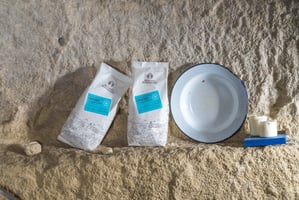The crust is the calling card of authentic Italian artisanal bread. Crispy, golden, and fragrant,...
Legumes: a sustainable food

On February 10 each year, FAO celebrates World Legumes Day in recognition of the nutritional values of legumes and their contribution to sustainable food systems and a world free of hunger.
Legumes: what are they?
The term "legumes" identifies the edible seeds of plants belonging to the family Leguminosae , available both fresh and dried. Legumes have been cultivated and consumed since ancient times.
The most widely consumedlegumes in the world are beans and lentils followed by chickpeas, peas, broad beans, chickling peas, lupins, and soybeans.
Nutritional values of legumes
Legumes are an excellent source of plant protein, the amount of which varies depending on the type of legume ( lupins and soybeans contain the most). They have a very low fat content (about at 1 g / 100 g of dry product) and contain valuable minerals such as zinc, iron, selenium, calcium, potassium, phosphorus, and B vitamins. In addition, they are rich in soluble fiber, the amount of which always depends on the type of legume (lentils, chickpeas beans, and broad beans are those that contain the highest amounts)
Useful tips
Because of the large amount of fiber contained in the husk, many people associate certain disorders such as abdominal bloating or meteorism with the consumption of legumes. However, there are several tricks that can reduce these unwanted effects, let's see what they are!
- First, it is preferable to use dried legumes, not canned ones, soak them for at least 12 hours with 3-4 bay leaves.
- We can add a pinch of baking soda, which will make it easier to peel the skin off the legume; a pinch of baking soda can also be added while cooking;
- If we want to avoid fiber while not giving up the flavor, minerals and vitamins contained in legumes, we can puree them;
- Finally, as many moms do during the early stages of weaning their babies, we can use hulled legumes.
Did you know.
Peanuts are legumes but by habit we consume them as dried fruits; Green beans, on the other hand, although they are legumes are more similar to vegetables from a nutritional point of view.
When cooking some legumes, a white foam forms that is good to remove with a wooden spoon because it contains saponins. These substances are called "anti-nutrients" because they hinder the normal absorption of trace elements in legumes!!!
Visit our shop to buy legumes of Italian origin, selected by the best farmersCLICK HERE



